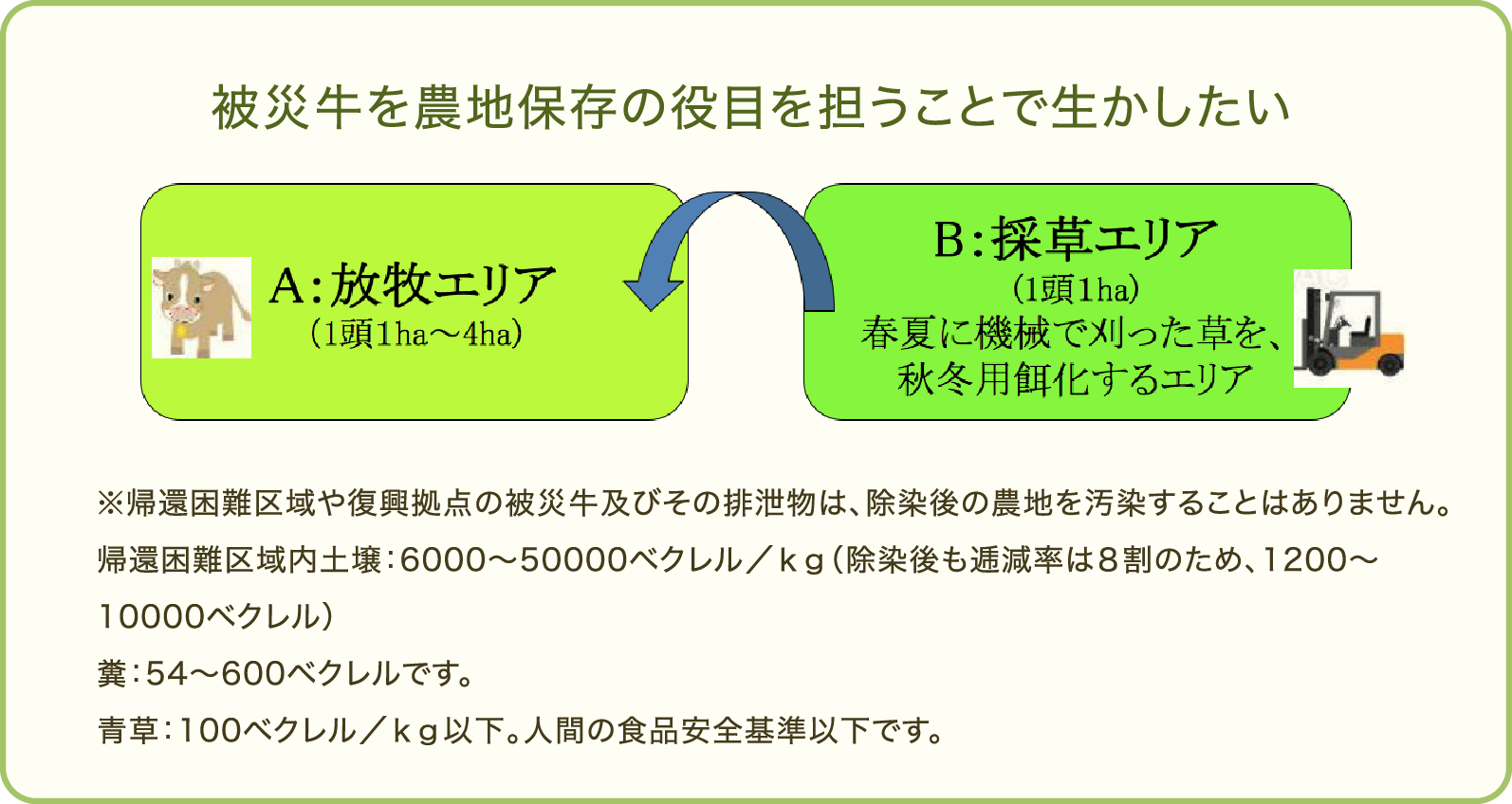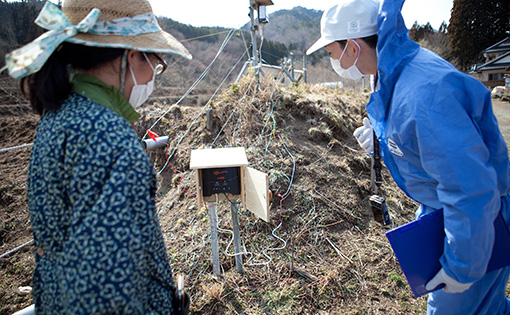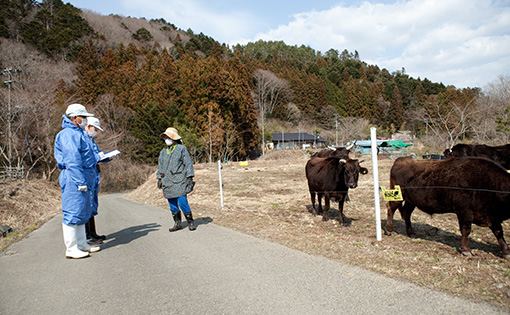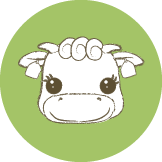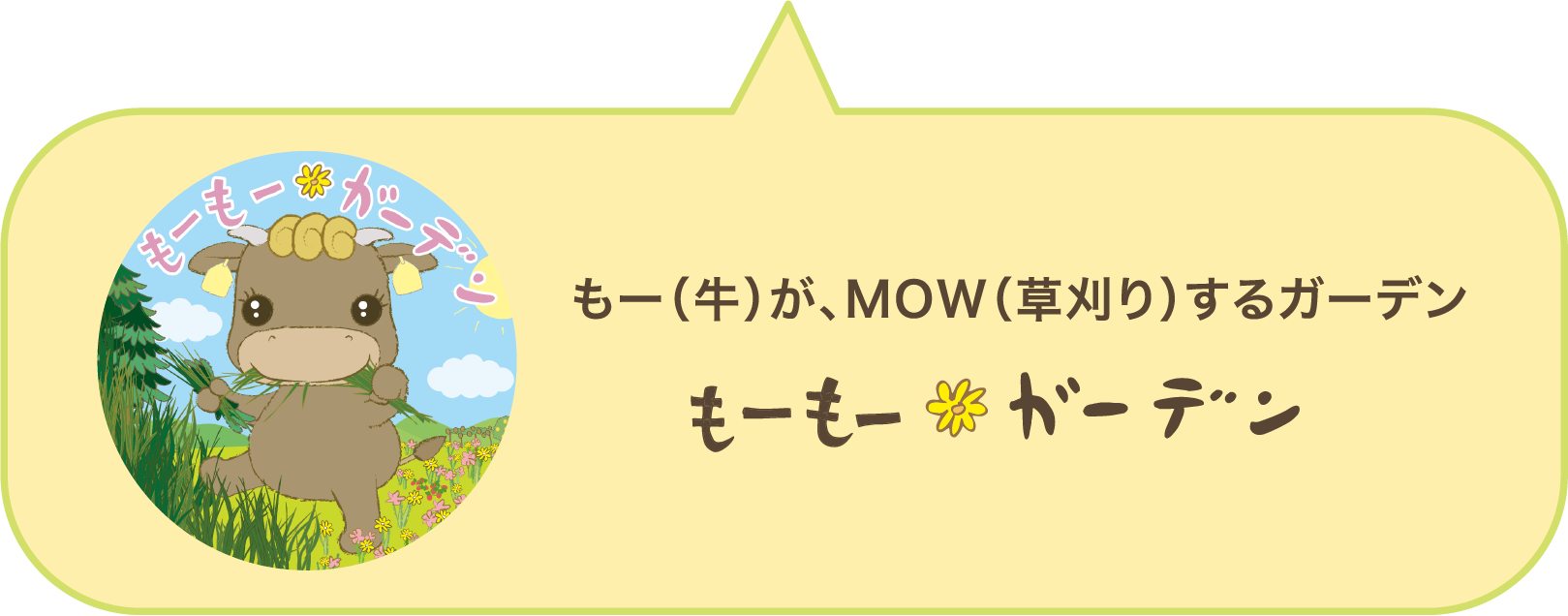
Project Vision
I want to create a place
where people and nonhumans
can flourish together
Situated within the post-earthquake “Difficult-to-Return Zone” of Ōkuma, Moo-Mow Garden is a project that has developed in very unique conditions. Since the beginning of this project, we have worked in warm and close connection with former locals to work around the innumerable restrictions posed by this area. Unique situations bring unique solutions, and today we would like to think of Moo-Mow Garden as a model that could be potentially adapted and expanded to other areas of the country, and as an attempt to envisage different ways in which people and nonhumans could flourish together.
After the accident, the exclusion zones of Fukushima were evacuated, and given the warm and humid climate of Japan, it was not long before wild plants and animals made their way over what used to be croplands and the living space of former residents. This situation is by no means exclusive to Fukushima Prefecture: in-between mountain areas comprise around 70% of Japanese territory, and there are more than 420 thousand hectares of abandoned croplands in the country (a number that has increased nearly 3.5 times since 1980). On the other hand, Japan has one of the lowest food self-sufficiency rates, producing only 40% of its total amount of food.
Because few people are allowed into the exclusion zone, and only during specific times of the day, we have had to come up with ways to take care of the cows with little effort considering these restrictions. We believe that by applying these techniques, even the old people in areas with a declining population are able to take care of other cows and areas.
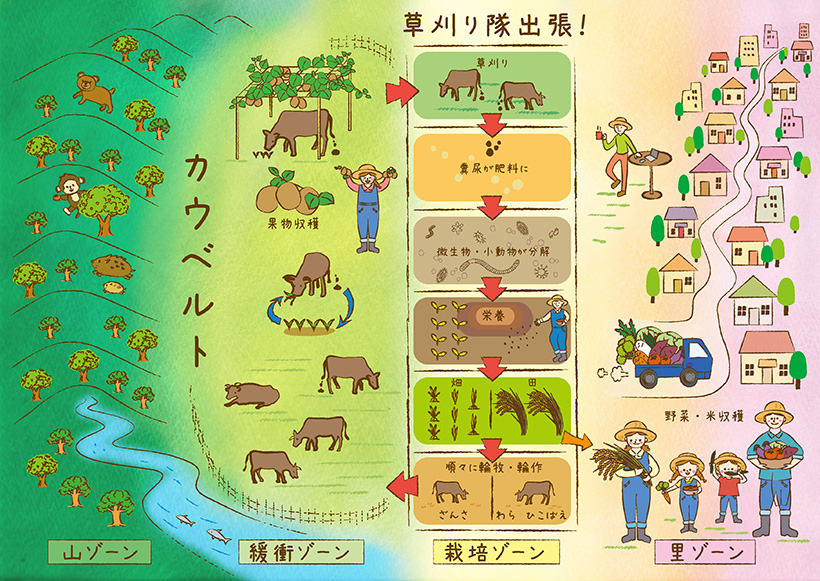
From left to right: Mountain zone, cow belt, buffer zone, cultivation zone, town zone.
・Saving lives and people’s hearts
Currently, Moo-Mow Garden only takes care of eleven cows. However, there are still hundreds of cows in the whole area. Many of these cows are being raised in traditional farm settings, requiring a lot of money without any monetary return. For this reason, many other farmers are struggling to keep these cows fed, and some cows still face the risk of execution. Our model, which provides a sustainable and mutually beneficial way of taking care of these cows, could save and improve the lives of many other animals and of their former caregivers who have decided to keep them from any further suffering. The ideas of this sustainable model could be applied to other animals in different situations and contexts.
・Preserving the land
The cows at Moo-Mow Garden can enjoy a full life while, at the same time, contributing to the region by feeding on the nutritious grass and foliage of these evacuated areas. All that is needed is a fence, water and salt, and one cow could protect a whole hectare; when the grass and foliage has been “mown”, the cows can move to the next area. By removing wild grass and foliage, the land becomes clear. Machinery and labor costs can be reduced this way. The cows don’t pull the grass from the roots, and by doing so, they prevent the degradation of soil and soil bacteria. The excrement of the cows is decomposed and returns to the land, keeping it fertile. Land that is ready for the growth of crops is achieved naturally.
・Buffer-zone re-establisment
Another problem with the abandonment of croplands is the advance of wild animals from the mountains into the town. This results in increased risks for the nearby villages, as well as in problems such as roadkill or unnecessary hunting. By removing the hiding place and food sources of wild animals, such as bears and boars, the cows create a buffer-zone or “cow-belt” that helps to maintain the original division between the town and the mountains.
・Healing the environment
Surviving cows could also contribute to the maintenance (thinning) of man-made forests. This not only helps to prevent windthrows and fire outbreaks, but also increases the minerals that reach the sea, enriching the underwater environment as well.
This not only re-flourishes the forest, but also contributes to the health of the rivers and seas that receive minerals from the mountains. Clearing the undergrowth away may also have the effect of preventing fire outbursts.
On an even larger scale, we can see that by making the best out of cows’ habits to preserve croplands and avoiding the use of machinery, fertilizers or the importing of feed and forage from other regions, we create a more sustainable and ecologically-friendly model, which can be maintained with the limited manpower available in the Japanese countryside.
・Preserving a beloved hometown
It is true that it is not yet possible for the former residents of Ōkuma to return to their hometown. However, against the sad landscape of a nuclear wasteland, we are creating a space of hope, where humans and gentle animals peacefully enjoy the mountains, rivers and fields. The former residents are happier with this image, compared to one of a nuclear wasteland, and may eventually be able to return, either as residents or for leisure.
・Creating jobs
Moo-Mow Garden has created some job opportunities for the area. There is, for example, a need to provide cows with hay during the winter. Drying the pasture of surrounding land for the winter has its costs, but we consider that this has a positive impact in protecting these adjacent lands, and generating some economic activity for the inhabitants of the area. They are happy to work for their hometown.
・A model case for policy-making
As croplands all over the country face abandonment, the advancement of wild species over the formerly cropped land in the local area presents similar problems to those observed in other areas. By creating a successful model in Fukushima, we can expect to provide a solution to be taken on by other people.

